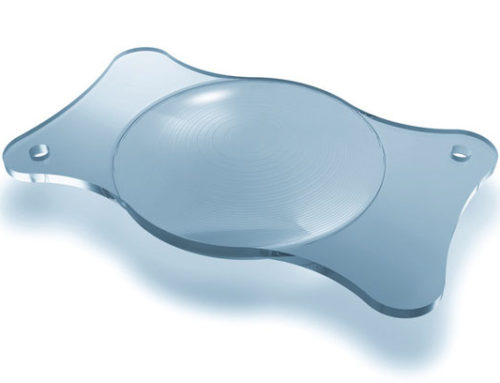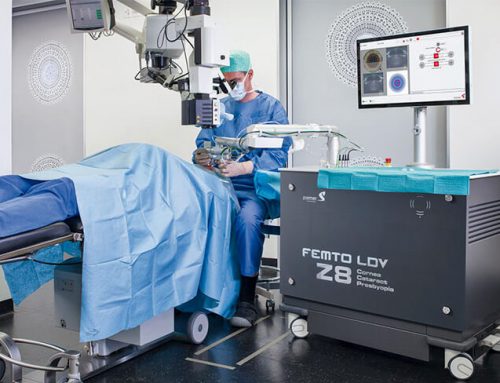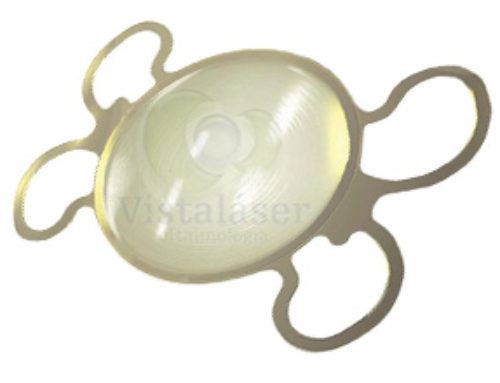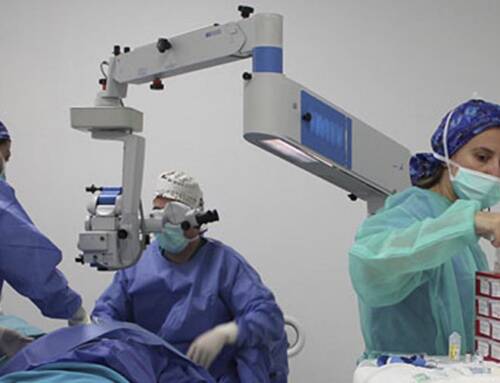Lens replacement surgery, as its name suggests, is intended to replace an intraocular lens. Ophthalmologists implant different types of lenses into the eye and even more than one into a single eye. The following are the types of surgery and intraocular lenses used.
The invention of the intraocular lens was a spectacular and fortuitous breakthrough in the world of ophthalmology. In recent decades, different models of intraocular lenses have been developed to solve various visual problems. Currently, the most commonly used lenses are those that replace the crystalline lens. They are the solution for tired eyes and cataracts. But there are also phakic lenses that are placed in front of the lens to correct common problems such as nearsightedness, farsightedness or astigmatism.
Types of Lens Replacement Surgery
A lens replacement surgery can refer to any of the interventions we have discussed. For this reason, we will now go into more detail on each of them and the reasons that may require a replacement of the implanted lens.
1. ICL lens replacement surgery
Phakic lenses or ICL (implantable Contact Lenses) are the alternative to laser refractive surgery. Most people choose to have laser vision surgery because it is cheaper, but there is the possibility of implanting an ICL intraocular lens that performs the same optical correction.
Patients with moderate or severe graduations can obtain a better quality of vision with this treatment. In fact, for patients with very thin corneas or very high graduations this is often the only solution.
In any case, a great advantage is that the lens can be removed or replaced if necessary. We must keep in mind that the cornea is a living tissue and therefore over the years the graduation may vary. If you have laser surgery, the number of touch-ups is limited, depending on the thickness of the corneal artery you have left. An ICL patient, on the other hand, can have his or her lens replaced to see well again.
2. Clear lens replacement surgery
Clear lens surgery replaces the natural lens of the eye with an artificial lens. This type of operation is usually requested by patients with presbyopia who have not yet developed cataracts but do not wish to wear glasses or contact lenses, nor are they good candidates for laser surgery. Therefore, we propose the implantation of an intraocular lens that will provide them with several vision focuses to be able to see well at all distances.
Another patient profile would be those who have high myopia or hyperopia that we cannot solve with LASIK, PRK or phakic lenses. When a correction of more than 30 diopters is required, a piggyback can be performed. In ophthalmology, this refers to the placement of one intraocular lens over another to achieve greater optical correction.
A great advantage of this operation is that the patient will never have cataract problems. By removing the lens, you can enjoy good vision for the rest of your life. Some people prefer it because they consider it safer to have surgery at 45 or 55 years of age than at 65 or 75 years of age, for example.
3. Cataract lens replacement surgery
Cataract surgery is the same as the one mentioned in the previous point. It is simply that in this case the patient’s lens is aged and has lost transparency. Therefore, there is no choice but to replace it in order to see well.
It is an operation that covers Social Security in Spain. But only to implant monofocal lenses to see well from a distance. Bifocal or trifocal intraocular lens implantation is only performed in private eye clinics.
If a cataract patient has cataract surgery again, blurred or clouded vision may be due to several reasons. The most common is the opacification of the capsule, that is, when we remove the lens we keep the capsule where it was lodged to hold the new intraocular lens. The risk is that over time the capsule will lose its transparency, in which case a YAG laser capsulotomy treatment may be applied that lasts only a few minutes. It is less common for the intraocular lens to become dirty, if this happens the only solution is lens replacement.
After this cataract operation, the patient may perceive halos or flashes during the first few weeks, and even have slightly blurred vision. When these problems persist, the patient may not be able to adapt to the trifocal or bifocal lenses, which are lenses with several focuses that require a visual neuroadaptation. If your brain does not adapt to this new way of processing images, your ophthalmologist may suggest replacing the lens with a monofocal lens.
How is Lens Replacement Surgery?
These surgeries are performed in the operating rooms of the Vistaláser clinics in Málaga, Marbella and Granada. For safety, the surgeon may leave a time lapse between the first and second eye operations. During the operation, the patient will be awake and relaxed and will not feel any pain.
You can start to enjoy the results after the operation, once the effects of the dilating drug have worn off. Intraocular lenses are neither visible nor noticeable. They integrate seamlessly with our visual system and are designed to last a lifetime.
Each of these surgeries is priced differently depending on the type of lens needed. Therefore, in order to know the price of a lens replacement surgery we must first go to the ophthalmologist. After carrying out the relevant tests we will give you a totally personalised estimate. If you wish, you can now make an appointment at your nearest Vistaláser eye clinic.








Leave A Comment